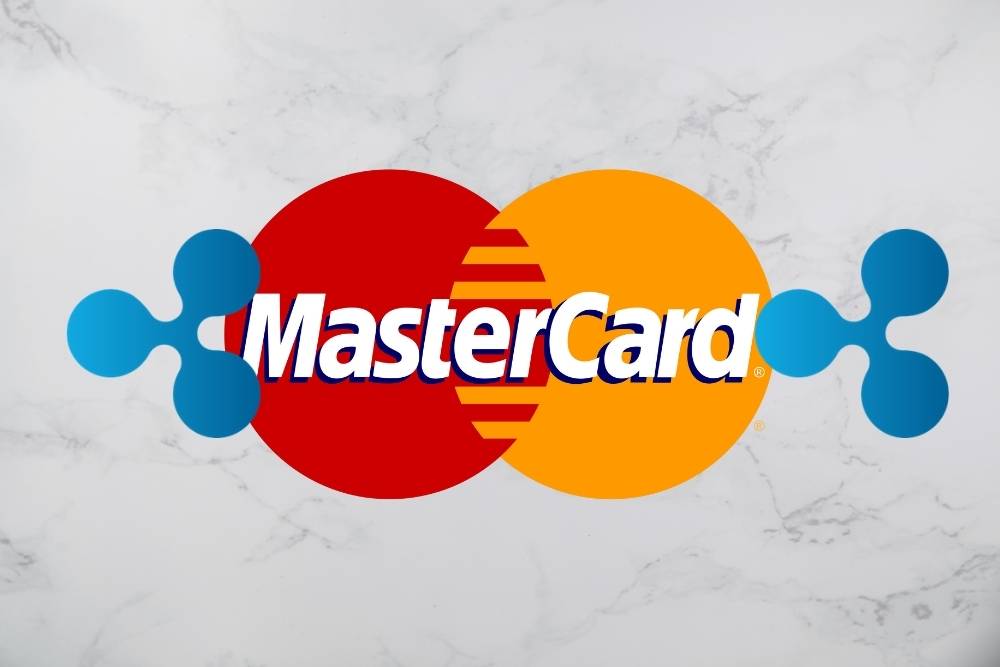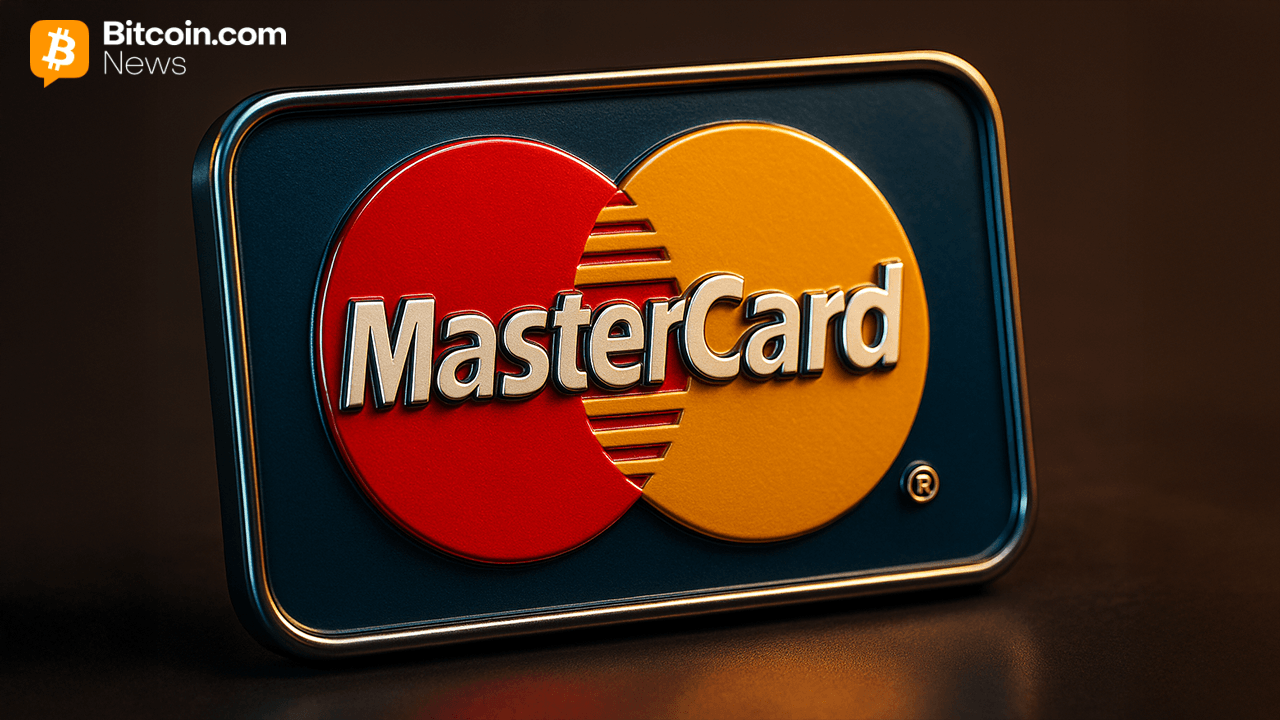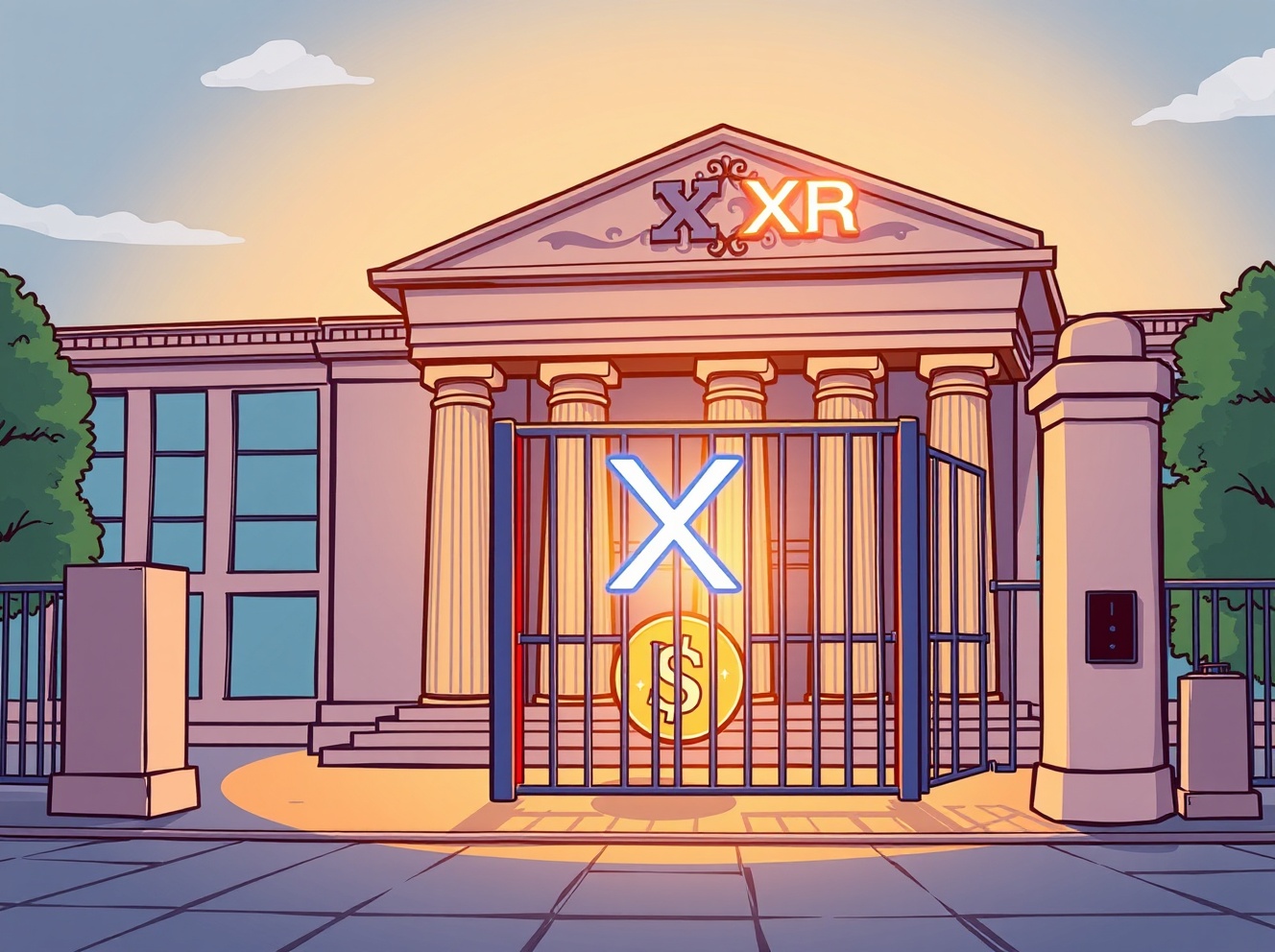
BitcoinWorld MARA Holdings Q3 Revenue Soars: A Spectacular 92% Growth! In a truly remarkable turn of events for the cryptocurrency sector, Nasdaq-listed Bitcoin mining firm MARA Holdings has unveiled its latest financial results, revealing an astonishing surge in its performance. The company’s MARA Holdings Q3 revenue figures are not just numbers; they tell a compelling story of resilience and strategic success in a volatile market. What Drove This Impressive MARA Holdings Q3 Revenue Surge? MARA Holdings reported a staggering third-quarter revenue of $252 million. This figure represents an incredible 92% increase compared to the same period last year, according to reports from Decrypt. Such growth is a significant achievement, especially when considering the challenging market conditions that have often characterized the crypto space. Moreover, the company didn’t just boost its top line. MARA Holdings also posted a net income of $123 million. This marks a monumental turnaround from the $124 million loss recorded in the third quarter of the previous year. This shift from a substantial loss to considerable profit underscores a period of robust operational improvements and favorable market dynamics. Beyond the Numbers: Understanding MARA’s Strategic Edge This phenomenal growth in MARA Holdings Q3 revenue and profitability didn’t happen by chance. Several key factors likely contributed to this success: Increased Bitcoin Production: MARA has consistently expanded its mining operations, boosting its hash rate and, consequently, its Bitcoin output. Bitcoin Price Recovery: The broader recovery in Bitcoin’s price during the quarter undoubtedly played a crucial role, making each mined Bitcoin more valuable. Operational Efficiency: Enhanced efficiency in energy consumption and mining infrastructure likely reduced operational costs, directly impacting the net income. Strategic Management: Effective management decisions in deploying capital and optimizing mining fleet performance have been pivotal. The ability to scale operations while simultaneously improving efficiency is a testament to MARA’s strategic foresight and execution. What Does This MARA Holdings Q3 Revenue Growth Mean for Bitcoin Mining? MARA Holdings’ strong performance sends a powerful signal to the entire Bitcoin mining industry. It demonstrates that profitability is not only possible but can be significant, even for publicly traded companies facing intense scrutiny. This positive outcome could: Boost Investor Confidence: Strong earnings reports from major players like MARA can attract more institutional and retail investment into the Bitcoin mining sector. Encourage Innovation: Companies will continue to invest in more efficient mining hardware and sustainable energy solutions to replicate such success. Set a Benchmark: MARA’s impressive MARA Holdings Q3 revenue and profit figures establish a high benchmark for other mining firms to aspire to. However, it’s important to remember that the crypto market remains dynamic. Factors like future Bitcoin price fluctuations, energy costs, and the upcoming Bitcoin halving event will continue to shape the industry’s landscape. MARA’s Future: Navigating Opportunities and Challenges Looking ahead, MARA Holdings is well-positioned to capitalize on potential future growth in the Bitcoin ecosystem. Its current profitability provides a strong foundation for further expansion and technological upgrades. Nevertheless, the company, like all others in the sector, must remain agile. Challenges such as increasing network difficulty, global energy price volatility, and regulatory changes are constant considerations. Maintaining a competitive edge will require continuous innovation and a commitment to operational excellence. The strong MARA Holdings Q3 revenue provides significant capital to address these future challenges head-on. In conclusion, MARA Holdings’ third-quarter results are nothing short of spectacular. The massive 92% year-over-year revenue increase to $252 million, coupled with a significant swing from loss to a $123 million net income, highlights a period of exceptional growth and strategic success. This performance not only strengthens MARA’s position as a leader in Bitcoin mining but also injects a renewed sense of optimism into the broader cryptocurrency market, proving that focused execution can yield impressive returns even in complex environments. Frequently Asked Questions (FAQs) What is MARA Holdings? MARA Holdings, officially Marathon Digital Holdings, is a Nasdaq-listed company primarily focused on Bitcoin mining. It operates large-scale data centers with specialized hardware to mine new Bitcoin. How did MARA Holdings achieve such significant Q3 revenue growth? The significant growth was driven by a combination of factors, including increased Bitcoin production due to expanded mining operations, a recovery in Bitcoin’s market price, and improved operational efficiencies in its mining facilities. What is the significance of MARA’s net income turnaround? Turning a $124 million loss into a $123 million net income signifies a dramatic improvement in the company’s financial health and operational profitability. It indicates effective cost management and revenue generation strategies. How does MARA’s performance reflect on the broader Bitcoin mining industry? MARA’s strong performance serves as a positive indicator for the entire Bitcoin mining industry, demonstrating the potential for significant profitability and attracting further investment and innovation into the sector. What are the potential future challenges for Bitcoin mining companies like MARA? Future challenges include managing increasing Bitcoin network difficulty, navigating volatile energy prices, adapting to evolving regulatory landscapes, and preparing for the upcoming Bitcoin halving event which reduces mining rewards. If you found this insight into MARA Holdings’ impressive financial performance helpful, consider sharing it with your network! Spread the word about the exciting developments in the Bitcoin mining sector. To learn more about the latest Bitcoin mining trends, explore our article on key developments shaping Bitcoin future outlook. This post MARA Holdings Q3 Revenue Soars: A Spectacular 92% Growth! first appeared on BitcoinWorld .
Bitcoin World
You can visit the page to read the article.
Source: Bitcoin World
Disclaimer: The opinion expressed here is not investment advice – it is provided for informational purposes only. It does not necessarily reflect the opinion of BitMaden. Every investment and all trading involves risk, so you should always perform your own research prior to making decisions. We do not recommend investing money you cannot afford to lose.
Essential UK Stablecoin Regulations Align with US Approach – What You Need to Know

BitcoinWorld Essential UK Stablecoin Regulations Align with US Approach – What You Need to Know Are you wondering how the UK’s new stablecoin regulations will affect your cryptocurrency activities? The Bank of England just announced that their approach to stablecoin regulations will closely mirror the United States’ framework. This crucial development signals a coordinated global effort to bring stability and security to the digital asset space. What Do the New Stablecoin Regulations Mean for You? According to Deputy Governor Sarah Breeden, the Bank of England plans to implement specific holding limits as part of their stablecoin regulations. These limits include temporary caps of £20,000 for individual users and £10 million for corporations. This approach ensures that the UK’s stablecoin regulations maintain consistency with international standards while protecting consumers. The alignment of stablecoin regulations between the UK and US represents a significant step toward global cryptocurrency standardization. Moreover, this coordinated effort helps prevent regulatory arbitrage and creates a more predictable environment for businesses operating in both markets. Why Are Stablecoin Regulations So Important? Stablecoin regulations serve multiple critical purposes in the cryptocurrency ecosystem. First, they provide consumer protection against potential market manipulation and fraud. Second, they establish clear guidelines for businesses operating in this space. Finally, proper stablecoin regulations help maintain financial stability by ensuring these digital assets don’t pose systemic risks. Consumer Protection : Limits prevent excessive exposure to single assets Market Confidence : Clear rules encourage institutional participation Financial Stability : Prevents systemic risks from unregulated growth International Cooperation : Aligned approaches reduce regulatory conflicts How Will These Stablecoin Regulations Impact the Market? The implementation of these stablecoin regulations will likely have immediate effects on how users and businesses interact with digital assets. The £20,000 individual limit means retail investors must diversify their stablecoin holdings across multiple providers or assets. Similarly, the £10 million corporate cap requires larger entities to implement sophisticated treasury management strategies. These stablecoin regulations also create opportunities for innovation in custody solutions and risk management tools. Financial technology companies can develop products that help users comply with the new requirements while maximizing their operational efficiency within the regulatory framework. What Challenges Do Stablecoin Regulations Present? While the alignment of stablecoin regulations between the UK and US provides clarity, it also introduces certain challenges. Market participants must adapt to new compliance requirements and reporting standards. Additionally, the temporary nature of the holding limits means businesses need flexible systems that can accommodate future regulatory changes. However, the benefits of having clear stablecoin regulations outweigh these transitional challenges. The framework provides much-needed certainty for investors and businesses alike, potentially accelerating mainstream adoption of digital assets. Key Takeaways from the New Stablecoin Regulations The Bank of England’s announcement about stablecoin regulations marks a pivotal moment for the cryptocurrency industry. By aligning with US approaches, the UK demonstrates its commitment to fostering a secure and innovative digital asset ecosystem. These stablecoin regulations balance innovation with necessary safeguards, creating a foundation for sustainable growth. As these stablecoin regulations take effect, market participants should prepare for increased compliance requirements while recognizing the long-term benefits of regulatory clarity. The coordinated approach between major financial centers sets a positive precedent for global cryptocurrency regulation. Frequently Asked Questions When will the new stablecoin regulations take effect? The Bank of England hasn’t announced a specific implementation date, but the framework is expected to be introduced in the coming months following further consultation with industry stakeholders. How do the UK stablecoin regulations compare to other countries? The UK’s approach closely mirrors US regulations, creating alignment between two major financial markets. This coordination helps prevent regulatory fragmentation and supports global cryptocurrency adoption. Can individuals hold more than £20,000 in stablecoins? The £20,000 limit applies per individual user per service provider. Users can potentially hold additional stablecoins with different regulated providers, though they should monitor their overall exposure. Will these regulations affect existing stablecoin holdings? Existing holdings will likely need to comply with the new limits once the regulations take effect. Users should prepare to adjust their portfolios accordingly during any transition period. Do these regulations apply to all types of stablecoins? The framework primarily targets fiat-backed stablecoins, which maintain reserves in traditional currencies. Other types of stablecoins may face different regulatory treatment based on their underlying structures. How will enforcement of these regulations work? The Bank of England and Financial Conduct Authority will jointly oversee compliance, with authorized firms required to implement systems that ensure adherence to the holding limits and other requirements. Found this analysis of stablecoin regulations helpful? Share this article with your network on social media to help others understand these important regulatory developments. Your shares help spread valuable information throughout the cryptocurrency community. To learn more about the latest cryptocurrency trends, explore our article on key developments shaping digital assets institutional adoption. This post Essential UK Stablecoin Regulations Align with US Approach – What You Need to Know first appeared on BitcoinWorld . Bitcoin World

Ripple Partners Mastercard to Bring RLUSD Credit Card Settlements to XRP Ledger
Ripple has announced a major step toward integrating stablecoins into traditional finance, revealing a collaboration with Mastercard, WebBank, and Gemini to support stablecoin settlements for fiat credit card payments. The announcement was made during Ripple Swell 2025 in New York and shared by the company on X, highlighting plans to use RLUSD, its stablecoin, on the XRP Ledger (XRPL) for blockchain-based settlement of card transactions. The initiative will enable RLUSD to facilitate settlement processes between Mastercard and WebBank, the issuer of the Gemini Credit Card . According to Ripple, this marks one of the first collaborations in which a regulated U.S. bank will settle traditional card transactions using a regulated stablecoin on a public blockchain. Ripple Swell: We’re collaborating with @Mastercard , WebBank, and @Gemini to introduce $RLUSD settlement on the XRP Ledger for fiat credit card payments, starting with the Gemini XRP Credit Card: https://t.co/36yoNBtM9f This initiative sets a new benchmark for institutional… pic.twitter.com/7UVhCTfuo0 — Ripple (@Ripple) November 5, 2025 Stablecoin Settlement Enters Mainstream Finance Ripple stated that the effort builds on its earlier work with Gemini and WebBank, which launched an XRP edition of the Gemini Credit Card in August. The new initiative extends that model by exploring how RLUSD can make card payment settlement faster and more transparent while maintaining compliance within the existing financial system. According to Ripple’s press release , Sherri Haymond, Global Head of Digital Commercialization at Mastercard, said the partnership uses Mastercard’s global network to bring “regulated, open-loop stablecoin payments into the financial mainstream.” She added that Mastercard’s approach emphasizes strong consumer protections, a level playing field, and full regulatory compliance. More Experts Weigh In Ripple President Monica Long said the collaboration demonstrates how “regulated digital assets like RLUSD can enhance settlement,” adding that the XRPL will continue to serve as the backbone for institutional use cases that improve financial services. WebBank CEO Jason Lloyd said banks can bridge blockchain innovation with traditional finance to enhance institutional payments using stablecoins, and Gemini CFO Dan Chen added that the partnership shows how stablecoin settlement can advance the Gemini Credit Card and integrate digital assets into consumer spending. We are on X, follow us to connect with us :- @TimesTabloid1 — TimesTabloid (@TimesTabloid1) June 15, 2025 XRPL and RLUSD Power the Settlement Network The XRP Ledger provides the infrastructure for this initiative, offering low costs and fast transaction processing. XRP continues to play a vital role in securing the network and enabling efficient transfers as Ripple expands the ecosystem with RLUSD. RLUSD is a U.S. dollar–backed stablecoin issued under the New York Department of Financial Services (NYDFS) Trust Company Charter. It is fully backed by cash and cash-equivalent reserves. Since launching in late 2024, RLUSD has grown to over $1 billion in circulation, supported by its integration in Ripple’s cross-border payment solutions and DeFi applications. Ripple and its partners plan to begin RLUSD onboarding on the XRPL in the coming months, pending regulatory approvals, before integrating it into Mastercard and WebBank’s settlement systems. Disclaimer : This content is meant to inform and should not be considered financial advice. The views expressed in this article may include the author’s personal opinions and do not represent Times Tabloid’s opinion. Readers are advised to conduct thorough research before making any investment decisions. Any action taken by the reader is strictly at their own risk. Times Tabloid is not responsible for any financial losses. Follow us on X , Facebook , Telegram , and Google News The post Ripple Partners Mastercard to Bring RLUSD Credit Card Settlements to XRP Ledger appeared first on Times Tabloid . Bitcoin World











